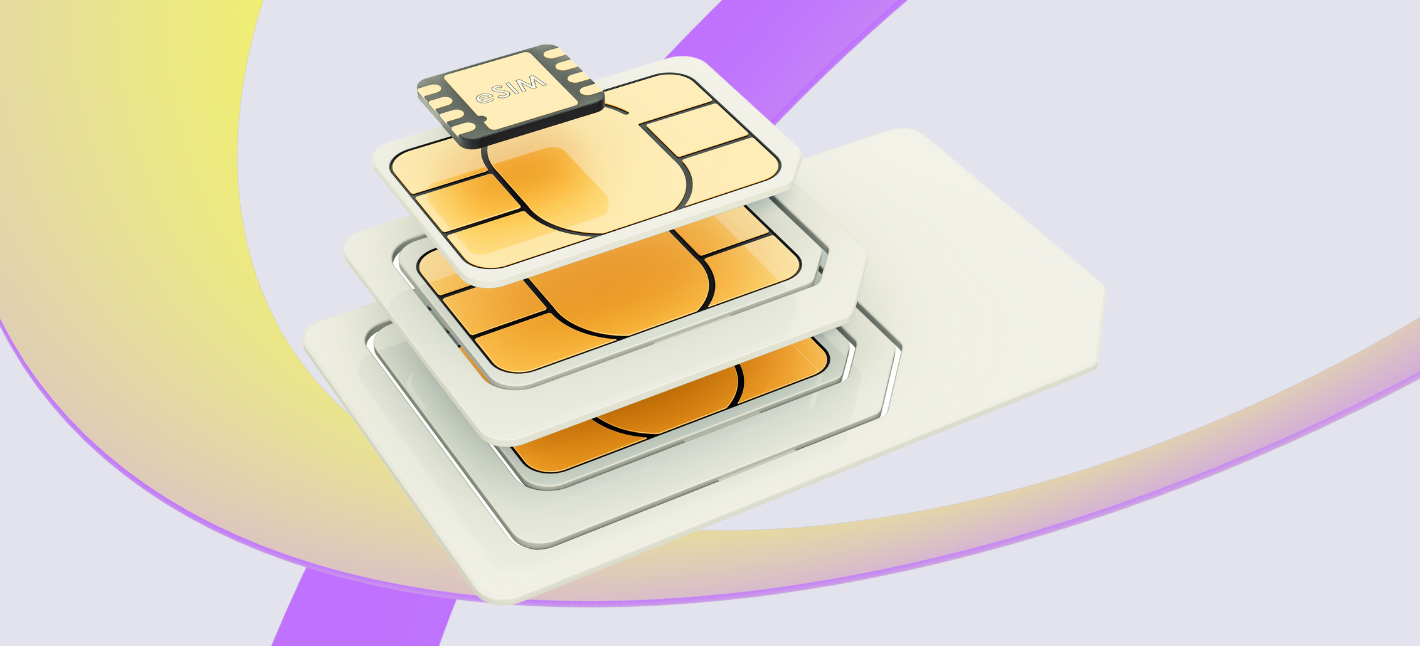Connectivity Of IoT Pressure on IoT Connectivity Prices

The world has witnessed a big transformation in the method in which we interact with our residing areas. Smart houses, equipped with linked gadgets, have risen dramatically in reputation, offering enhanced comfort, safety, and energy efficiency. However, achieving seamless integration of all these gadgets closely relies on efficient IoT connectivity options.
Various connectivity technologies facilitate communication between devices, guaranteeing that every component of the smart residence works harmoniously. Choosing the most effective IoT connectivity solutions for smart properties is essential for creating an efficient and responsive environment. These options differ when it comes to vary, energy consumption, and the kinds of devices they assist, allowing customers to tailor their smart house ecosystems to their specific wants.
Wi-Fi is certainly one of the most generally used connectivity solutions, primarily as a outcome of its ubiquitous nature and high information transfer rates. Many smart residence devices are already designed to attach effortlessly to existing Wi-Fi networks. This makes including new devices comparatively straightforward. Tablets, smartphones, and routers can usually support a quantity of devices concurrently, making it a convenient choice for smart residence lovers.
IoT Connectivity Policy Overview of IoT Connectivity Protocols
However, Wi-Fi is not without its challenges. The dependence on a secure web connection can occasionally lead to efficiency issues, especially with a quantity of gadgets trying to speak at once. Furthermore, the range may be limited depending on the structure of the home. Walls and other obstacles could cause signal degradation, which may hinder the efficiency of gadgets positioned removed from the router.

Zigbee is one other compelling possibility for IoT connectivity in smart properties. This know-how supports low-power gadgets, making it appropriate for battery-operated sensors and gadgets. Zigbee creates a mesh network, which means every linked system acts as a relay, expanding the vary of connectivity inside the home. This is particularly helpful in larger spaces the place traditional Wi-Fi would possibly battle.
IoT Connectivity Security Types of IoT Connectivity Explained
Z-Wave provides to the suite of options obtainable for smart homes. It operates on a decrease frequency than Wi-Fi, which suggests it could better penetrate partitions and avoid interference from different electronic devices. Z-Wave is engineered particularly for home automation, permitting varied units to work together seamlessly. The low power consumption additionally aids in battery longevity for devices that function on this network.
For purposes requiring low information rates however high reliability, LoRa (Long Range) offers a wonderful various. It is very useful for agricultural or environmental monitoring units that solely require intermittent data transmission. LoRaWAN (Low Power Wide Area Network) allows these devices to communicate over lengthy distances, making it a super solution for expansive properties or smart metropolis functions.
Cellular connectivity serves as another strong resolution, mainly for units that require fixed internet access however may not be installed close to established networks. This ensures that gadgets can send and receive knowledge over the web directly, eliminating reliance on house Wi-Fi techniques. While maybe dearer, cellular connectivity provides the profit of wide-reaching availability, significantly in rural or hard-to-reach areas.
Bluetooth can be a big participant in the realm of smart house connectivity, significantly for private devices like fitness trackers, smartwatches, and speakers. Its low energy necessities make it a gorgeous option for short-range communication. Bluetooth mesh networking enhances the protocol’s capability, enabling units to communicate successfully even when separated by a lengthy way.
IoT Global Connectivity Reviews of Managed IoT Connectivity Services
Thread is a comparatively newer protocol designed to make gadget connectivity less complicated. It additionally helps low-power units in a mesh community configuration. What sets Thread apart is its IPv6-based communication, which allows more straightforward integration with internet-based systems and services. This adaptability opens the door for future scalability as smart home technologies continue to evolve. Internet Connectivity In IoT.
The integration of various connectivity protocols is important for compatibility among gadgets. Many corporations have recognized that a single resolution may not meet all consumer needs, resulting in multi-protocol systems that may seamlessly switch between networks. Such flexibility permits homeowners to customise their smart environments and connect devices whatever the manufacturer.

As shoppers more and more emphasize sustainability, smart houses that facilitate energy-efficient residing have gained traction. IoT connectivity options contribute considerably to this pattern. Devices can talk to optimize energy utilization, adjusting heating, cooling, and lighting based on real-time data.
When selecting the best IoT connectivity solutions for smart homes, consumers should carefully consider their specific requirements. Those prioritizing speed might lean in the direction of Wi-Fi, while individuals needing to extend the range of connectivity may prefer Zigbee or Z-Wave. Budget, device compatibility, and the potential for future upgrades also play a major function in decision-making.
IoT Network Connectivity Survey on IoT Connectivity Technologies and Applications
Ultimately, one of the best IoT connectivity solutions for smart homes will improve not solely automated comfort but in addition the total living expertise by incorporating advanced technology into day by day routines. These options empower householders to manage their environments better and stay extra sustainably, simultaneously enjoying This Site the advantages of state-of-the-art connectivity.
In conclusion, with the rapid advancements in expertise, the landscape of smart house connectivity continues to evolve. As extra gadgets enter the market and extra homeowners embrace automation, the importance of robust connectivity solutions turns into increasingly obvious. Those who make investments time in understanding and implementing these options will undoubtedly contribute to creating more intelligent, efficient, and pleasant dwelling spaces.
- Various connectivity protocols like Zigbee, Z-Wave, and Wi-Fi cater to different smart home units, enhancing interoperability and device communication.
- Mesh networking capabilities allow devices to communicate extra efficiently, expanding protection and reducing dead zones inside larger houses.
- Low-power wide-area networks (LPWAN) present energy-efficient solutions for battery-operated units, promoting longer operational lifespans.
- The integration of edge computing ensures real-time knowledge processing, decreasing latency and enhancing total system responsiveness.
- Cloud-based IoT platforms supply in depth data analytics, enabling users to optimize gadget utilization and energy savings in their smart properties.
- Security features, such as end-to-end encryption and regular firmware updates, are essential for safeguarding smart house data from potential threats.
- Dual-band routers can support both 2.4 GHz and 5 GHz connections, offering flexibility and improved efficiency for various smart devices.
- User-friendly mobile applications enhance the management of smart residence gadgets, enabling seamless interactivity and scheduling functionalities.
- Interoperability standards, such as Matter, facilitate collaboration between completely different producers, selling seamless cross-device communication.
- 5G technology guarantees ultra-low latency and better bandwidth, potentially revolutionizing smart house experiences with sooner information transfer charges.
What are the several varieties of IoT connectivity options for smart homes?undefinedThere are a number of IoT connectivity solutions, including Wi-Fi, Zigbee, Z-Wave, Cellular, and LoRa. Each offers completely different benefits when it comes to range, pace, energy consumption, and scalability, permitting for tailored options based on specific smart house wants.
How does Wi-Fi examine to Zigbee for smart home devices?undefinedWi-Fi is quicker and widely used for high-bandwidth applications, whereas Zigbee is designed for low-power, low-bandwidth tasks, making it ideal for devices that require lengthy battery life. Zigbee additionally supports mesh networking, enhancing range and connectivity among units.
IoT Connectivity Companies Ultimate Guide to IoT Connectivity
What factors ought to I think about when selecting an IoT connectivity solution?undefinedConsider factors like vary, energy consumption, system compatibility, security features, and the precise wants of your smart residence ecosystem. Assess how many gadgets you propose to attach and their power requirements, ensuring the chosen solution helps your setup.

Are there safety dangers related to IoT connectivity options for smart homes?undefinedYes, safety risks embody unauthorized access and data breaches. It’s essential to determine on solutions with strong encryption and regular updates. Implementing robust passwords, firewalls, and keeping firmware updated can significantly improve your smart home’s safety - IoT Connectivity Technologies.
IoT Connectivity Policy Essential Guide to IoT Connectivity
Can I integrate a number of IoT connectivity solutions in my smart home?undefinedAbsolutely! Many smart home systems support integration across numerous protocols, allowing gadgets utilizing different connectivity solutions to work together seamlessly. This flexibility allows users to optimize performance and compatibility.
What role does the cloud play in IoT connectivity for smart homes?undefinedThe cloud permits remote management, data storage, and superior analytics for smart home gadgets. It facilitates communication between devices and consumer interfaces, permitting for real-time monitoring and management from wherever by way of internet connections.
IoT Connectivity Market Essential Guide to IoT Connectivity
How can I guarantee compatibility amongst completely different smart residence devices?undefinedCheck for compatibility labels and be certain that gadgets comply with common standards like Zigbee or Z-Wave. Research ecosystems, such as Google Home or Amazon Alexa, that help a extensive range of gadgets, simplifying integration and management.
What is the way forward for IoT connectivity options for smart homes?undefinedThe future is leaning towards enhanced interoperability, improved safety protocols, and the rise of 5G technology. These advancements will offer sooner speeds, greater system browse around this web-site density, and lower latency, enhancing the overall smart residence expertise.
How can I troubleshoot connectivity points in my smart home?undefinedStart by checking the ability sources and guaranteeing gadgets are inside vary of their connectivity hub. Restart routers and gadgets as needed. Use either app diagnostics or manufacturer assist resources for particular troubleshooting steps tailor-made to the devices in query.